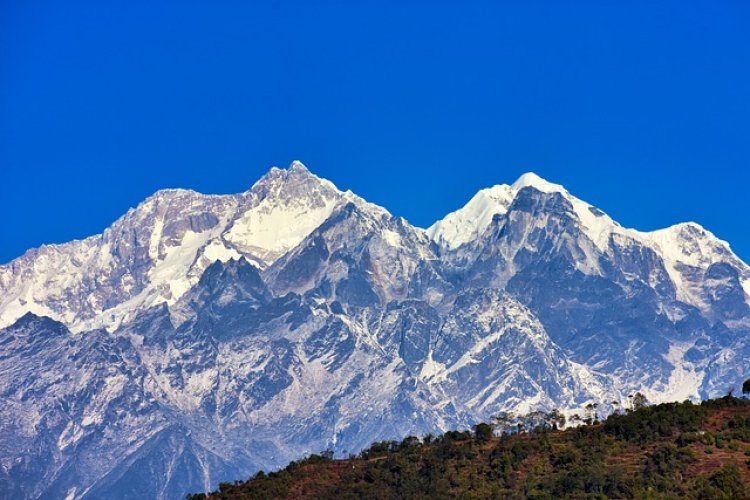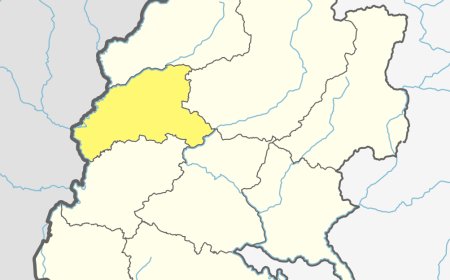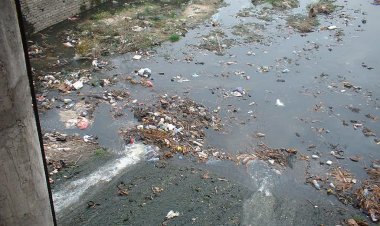Kangchenjunga: The Majestic Third Highest Peak in the World
Explore the third-highest peak, Mount Kangchenjunga, and its rich history, diverse ecosystems, and the art of responsible climbing.

Introduction
Kangchenjunga, the world's third-highest peak, stands as a sentinel of grandeur in the Eastern Himalayas, straddling the border between Nepal and the Indian state of Sikkim. Beyond its impressive elevation of 8,586 meters (28,169 feet), Kangchenjunga holds profound historical, cultural, and ecological significance. This comprehensive guide delves deep into the mysteries of Kangchenjunga, providing a thorough understanding of the mountain and the extraordinary journey required to conquer it. We will explore the mountain's historical and cultural context, its unique geographical features, the intricacies of climbing, how to prepare for the expedition, and the importance of responsible and sustainable mountaineering practices.
1. Kangchenjunga: A Historical and Cultural Overview
A. Historical Background
Kangchenjunga's history is intertwined with early explorations and daring attempts:
-
Early Explorations: In the mid-19th century, British explorers embarked on the monumental task of mapping the region. Joseph Dalton Hooker's survey in 1848-49 set the stage for future expeditions.
-
First Attempts: The first recorded attempt to scale Kangchenjunga was in 1905, led by Aleister Crowley's British expedition. Tragically, it ended in disaster, with lives lost and the summit unattained.
-
First Ascent: The summit was finally conquered on May 25, 1955, by a British team led by Charles Evans. Joe Brown and George Band were the first to reach the top, and out of respect for local customs, they stopped a few meters short of the actual summit.
B. Cultural Significance
Kangchenjunga is more than just a towering peak; it is deeply rooted in the culture of local communities:
-
Connection to Local Communities: The mountain holds immense spiritual significance for the people living in the region, especially in Sikkim and Nepal. It's known as the "Five Treasures of Snow," symbolizing the repositories of God – gold, silver, gems, grain, and sacred scriptures.
-
Sacredness and Folklore: Various ethnic groups, including the Lepchas, Limbus, and Sherpas, consider Kangchenjunga sacred. For the Lepchas, it's the dwelling place of their guardian deity, while the Limbus see it as their ancestor's abode. The region is also steeped in folklore, with stories of the elusive "Yeti" adding to its mystique.
-
Conservation Efforts: Recognizing Kangchenjunga's ecological and cultural importance, conservation initiatives like the Kangchenjunga Conservation Area (KCA) in Nepal have been established. The KCA, along with India's Khangchendzonga National Park, was declared a transboundary UNESCO World Heritage site in 2016, focusing on preserving biodiversity and cultural heritage.
2. The Mountain's Geographical Features
A. Geology and Formation
Kangchenjunga's awe-inspiring features are shaped by complex geological processes:
-
Tectonic History: The mountain's formation is a result of the ongoing collision between the Indian and Eurasian tectonic plates, dating back around 50 million years. This collision uplifted the Himalayas, including Kangchenjunga.
-
Rock Types: Kangchenjunga's geology boasts a variety of rock types. Metamorphic rocks, such as gneiss and schist, dominate higher elevations. Igneous rocks, like granite and pegmatite, are found at lower altitudes. Some sedimentary rocks, such as sandstone and shale, can be spotted as well.
B. Climatic Conditions
Kangchenjunga's climate is as diverse as its landscapes:
-
General Climate: The mountain experiences a harsh climate, characterized by cold temperatures, heavy snowfall, and strong winds. Higher elevations fall within the subarctic and alpine zones, where freezing temperatures and low oxygen levels challenge climbers and wildlife.
-
Seasonal Variations: Kangchenjunga experiences two primary seasons. The dry season (October to May) offers the best climbing conditions. The monsoon season (June to September) brings heavy rainfall, high humidity, and unstable weather, making climbing hazardous.
3. Flora and Fauna
Kangchenjunga's ecosystems host a rich variety of plant and animal life:
-
Unique Plant Species:
At lower elevations, dense subtropical and temperate forests abound, featuring rhododendrons, magnolias, oaks, and birches. As altitudes rise, alpine meadows and scrublands reveal hardy plants like junipers and dwarf rhododendrons. The highest reaches are home to specialized species like mosses and lichens. -
Rich Wildlife:
Kangchenjunga shelters a diverse array of wildlife, including the endangered snow leopard, red panda, Himalayan black bear, and Himalayan tahr. Over 300 bird species, including the Himalayan monal and blood pheasant, grace the skies. Conservation areas like the KCA and Khangchendzonga National Park play a pivotal role in safeguarding these species.
4. Climbing Kangchenjunga: A Journey through the Routes
Climbing Kangchenjunga is an extraordinary adventure fraught with challenges:
A. Major Climbing Routes
-
Southwest Face: This is the most frequented route, used during the first successful ascent. It starts from the Yalung Glacier in Nepal, featuring crevasses, steep slopes, and the daunting "Great Shelf."
-
North Face: Entirely within Nepal, this route is less traveled and more challenging. It begins at the Kanchenjunga Glacier and involves rock, ice, and mixed terrain, culminating in the treacherous "Black Pyramid."
-
Other Notable Routes: There are lesser-known routes like the Northeast Spur, East Ridge, and Northwest Face, each presenting its own set of challenges.
B. Challenges and Risks
-
Technical Difficulties: Climbers must navigate steep ice and snow slopes, exposed rock sections, mixed terrain, and other obstacles that demand advanced technical skills.
-
Altitude-Related Risks: Kangchenjunga's extreme altitude poses risks like Acute Mountain Sickness (AMS), High Altitude Cerebral Edema (HACE), and High Altitude Pulmonary Edema (HAPE). Proper acclimatization and health monitoring are crucial.
-
Weather-Related Risks: Unpredictable weather, sudden storms, heavy snowfall, and strong winds can lead to avalanches, rockfalls, and frostbite. Climbers must stay vigilant and make informed decisions.
5. Essential Climbing Skills and Equipment
To conquer Kangchenjunga safely, climbers need a robust skill set and proper gear:
Required Technical Skills:
- Mastery of crampons, ice axes, and mountaineering equipment
- Advanced ice and snow climbing techniques
- Rock climbing skills for varied terrains
- Route-finding and navigation in challenging conditions
- Crevasse rescue and self-arrest techniques
- Experience in high-altitude mountaineering and acclimatization protocols
Recommended Gear and Clothing:
-
Climbing Gear: Ropes, harnesses, helmets, carabiners, ice screws, and snow pickets.
-
Clothing: Insulated down suits, high-quality base layers, insulated jackets, waterproof and windproof outer layers, warm gloves, and high-altitude boots.
-
Camping Equipment: High-altitude tents, sleeping bags rated for extreme cold, and cooking gear for base camps.
6. Preparing for the Climb: Training and Logistics
Preparing for a Kangchenjunga climb is an extensive process that involves meticulous planning, rigorous training, and careful logistical considerations:
A. Physical and Mental Preparation:
-
Fitness Requirements: Climbers must be in excellent physical shape to handle the challenging terrain, extreme altitudes, and potential harsh weather. A comprehensive training program should include cardiovascular conditioning, strength training, flexibility, and altitude training.
-
Mental Strength and Resilience: Mental preparedness is equally vital. Climbers should cultivate a positive mindset, build mental toughness, and gain experience through progressively challenging climbs.
-
Consultation: It's essential to consult with a physician and/or a professional trainer to develop a personalized training program tailored to individual needs and goals.
B. Acquiring Permits and Choosing an Expedition Company:
-
Necessary Permits and Fees: Climbers must navigate the bureaucratic process of acquiring permits, which vary depending on the route and the country through which the climb is organized. This includes permit fees, conservation area or national park entry fees, and liaison officer fees.
-
Finding a Reputable Climbing Company: Due to the complexity of Kangchenjunga climbs, joining a guided expedition led by an experienced company is highly recommended. Consider factors such as the company's experience on Kangchenjunga, the qualifications of their guides, the quality of logistics and safety measures, their environmental and ethical practices, and reviews from past clients.
C. Planning and Itinerary:
-
Best Climbing Seasons: Kangchenjunga is best climbed during the dry season, typically from late September to early June. The prime climbing window is between April and May, offering more stable weather conditions and milder temperatures.
-
Estimated Duration: A typical Kangchenjunga expedition takes approximately 45 to 60 days, including acclimatization, climbing, and descent. The actual duration depends on various factors, including weather conditions and climbers' acclimatization and fitness levels.
-
Major Milestones: Climbers should outline major milestones during the ascent, including arrival and preparation, trekking to the base camp, acclimatization climbs, summit push, descent, and departure. The specific itinerary will vary based on the chosen route, climbing company, and individual preferences.
With thorough physical preparation, the right permits in hand, a reputable expedition company by your side, and a well-structured itinerary, you'll be well-prepared to embark on the incredible journey of conquering Kangchenjunga.
What's Your Reaction?








































































































